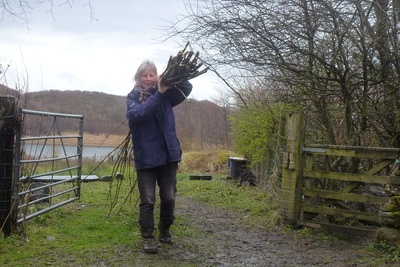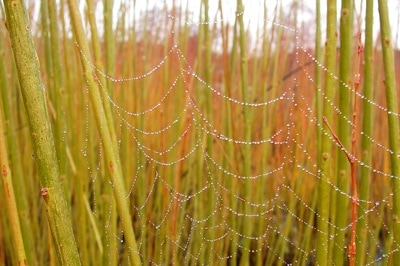Planting, Harvesting & DryingPlanting: Willow beds are established by planting pegs during the winter. Pegs are about the thickness of a pencil and are taken from the thick (butt) end of a one, two or three year old rod.
At first it is important to suppress weeds; I do this by planting through rows of black plastic, and strimming between the rows. After a few years the leaf fall from the rods is sufficient to both inhibit weeds and create a natural compost. Harvesting: Each winter all rods are cut back in a process known as coppicing. Not many rods grow in the first summer, but each subsequent year there will be more and more. Maximum production is reached after about seven years. Cutting must be carried out when the willow is dry - often a challenge in the Argyll winter! If damp willow is stored it will go mouldy or rot, so this single factor is hugely important. Sometimes our kitchen is full of damp willow drying by the rayburn when a wet squall catches us out... Coppicing is an ancient practice. In the past most villages had their own basket maker whose willow was grown alongside streams and rivers, or between fields. Hedgehogging: I'm not sure that this verb is used by anyone else... However, it is our term for a thorough weeding and cutting back of all the dead wood and wispy unsellable rods. Once this has been done the willow stools look like a row of fat hedgehogs... Drying: Freshly cut willow is stored inside in very loose bundles. I turn it regularly and shift the bundles about to be sure that they dry well. It is important not to let the damp in; even willow that is dry when cut can get damp inside a bundle if it's tied too tightly. |






















